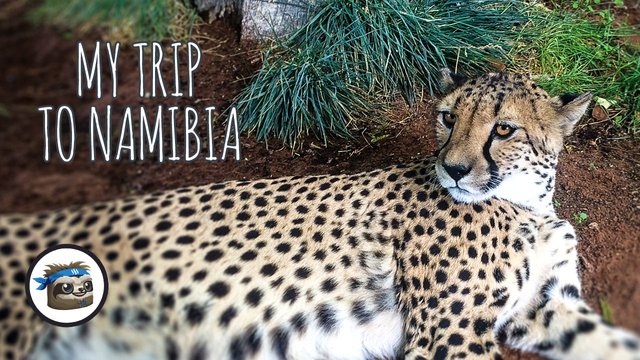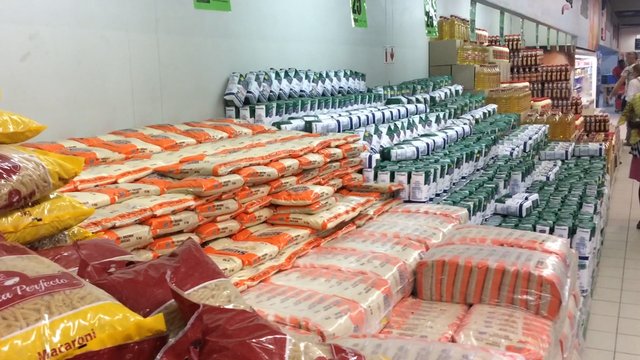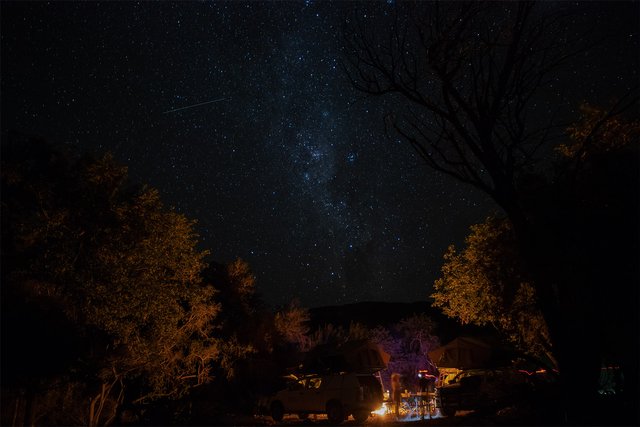Trip to Namibia (5): Vegetarian in the world of predators

Hey, it’s @the-veggie-sloth. People usually recommend African beef. It is said that southern African countries, like Botswana and Namibia, are famous for meat and seafood. There are very few vegetables in shops and cooks in restaurants do not prepare anything for vegetarians or vegans.
The specter of hunger
Some of this information I checked during my trip to Livingstone in Zimbabwe - a resort with a beautiful Victoria Falls. There was a small number of vegetarian dishes in several local pubs. Most offered steaks made of oryx or crocodile, ribs or, of course, seafood imported from neighboring countries. I could get at most spaghetti at an excessive price. It was the same in supermarkets. Sadness and emptiness at the vegetable grocery stand. However, it was a few years ago and the world is changing…
I remembered this experience and when I packed my bag on my trip to Namibia in February, I took two packs of soy chops, a few cans and large numbers of oat snacks, and I was very surprised when in Windhoek, during our first dinner, in the menu of the steak bar I found a whole section of dishes for vegetarians! In the capital of Namibia, I chose a vegetable burger - quite tasty. Then it was even better with food!

Culinary debauchery
After my first visit to the supermarket, I knew that in Namibia I could forget about my early fears. On most questionable products there are indications whether they are vegetarian or vegan. The choice of soya cubes and chops in different flavors was impressive, there were many different types of vegetables and they were good quality. Spices, including European spices, a lot, although I could not find cumin. Various types of bread. I could choose so many of these products and sometimes I had the feeling that I was in a nice Western European shop.
In Namibian shops, we can find food of world-famous brands and African specialties, such as chakalaka. It is a spicy vegetable tomato-based dish with an addition to peppers, onions, and carrots. It is often served with corn porridge, which in each African country has its own name - pap, sadza or ngima. In Namibia it is oshifima or in English maize. I bought 1 kilo of flour and one day I will cook for you a real pap.... or sadza ... or oshifima ;)


Milk, yogurts, beans of all kinds, juices and even ready-made pesto from fresh coriander, in the Namibian supermarket there was everything I needed. I asked myself why I took so much food from home. It wasn't just tofu, but I wasn't in Asia and I could live without it. In Namibia, they have a delicious cheddar! I even found vegan sausages in one of the shop fridges, but as you already know I avoid meat-like vegetarian products. Anyway, there wouldn't be a place in a car fridge, mostly occupied by cooling drinks.... alcoholic or not (in a minority).

Cooking stones
On our route, we rarely visited restaurants - literally a few times. In the menu of each of them, vegetarian dishes were marked with an icon or a special description. However, I usually cooked myself. Among the 16-person team, I was the only vegetarian. Of course, I always shared with the others as long as they showed a desire for a meatless add-on to the steak. In a quiet place, away from the bonfire and smells of fried meats, every evening I cooked my pot. Most often there were stewed vegetables in their own sauce, sometimes with the addition of soy cubes. I also made pasta, dahl and the simplest tomato-cucumber-onion salads. There was neither time nor conditions for delights. I had only two tourist pots and one stove, and anyway, we most often came to the campsite tired of a day-long ride, so I didn't really feel like culinary specialties.

Another problem was the wind, which in the evenings was blowing hard and made cooking difficult. After a few days of travel, when we were in the mountains, at an altitude of 1400 m above sea level, I had to hide a tourist stove at the back of the car in order to prepare anything. I was cooking potatoes for more than an hour, which the crew called a stone dish. All the vegetables had cooked up a long time ago but the potatoes stayed hard. If we talk about potatoes.... every evening we also lit a bonfire...

photo by Anna Klinkosz
Wood from shop
Wood in southern Africa is purchased in a shop, in the village from locals or in pubs. It is not allowed to collect wood from the campsite or the surrounding area. In one of the more luxurious stores, we bought wood in a cardboard box, but usually, one package is tied with a simple string. When the fire went out late in the evening, we baked potatoes. Hot, thrown from hand to hand, delicious potatoes, under a stunningly starry sky.

However, Namibia is a paradise for those who like meat. Every evening on other plates of our team there were steaks and sausages from local slaughterhouses. There was also a traditional African grill, i.e. a braai with the Himba people, on which a goat was eaten. I didn't want to look at it and I chose the sunset, which looked beautiful on the waterfalls of Epupa, on the border with Angola.

Peace and love @the-veggie-sloth
Check out the beautiful photos from this expedition in the gallery of Anna Klinkosz!
Congratulations! Your high-quality travel content was selected by @travelfeed curator @smeralda and earned you a partial upvote. We love your hard work and hope to encourage you to continue to publish strong travel-related content.
Thank you for being part of the TravelFeed community!
Learn more about our travel project by clicking on the banner above and join our community on Discord.